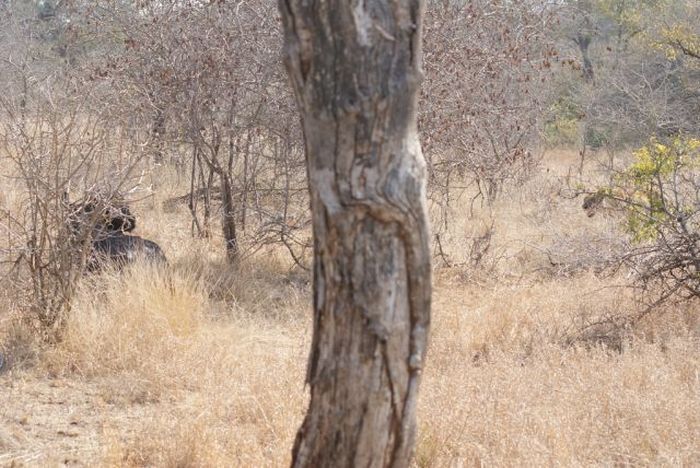|
|
Lioness Against A Buffalo
|
African buffaloes are notable for their apparent altruism. Females appear to exhibit some sort of “voting behavior”. During resting time, the females will stand up, shuffle around, and sit back down again. They will sit in the direction they think they should move. After an hour of more shuffling, the females will travel in the direction they decide. This decision is communal and not based on hierarchy or dominance. When chased by predators, a herd will stick close together and make it hard for the predators to pick off one member. Calves are gathered in the middle. A buffalo herd will respond to the distress call of a captured member and try to rescue it. A calf’s distress call will get the attention of not only the mother, but also the herd. Buffaloes will engage in mobbing behavior when fighting off predators. They have been recorded killing a lion and chasing lions up a tree and keeping them there for two hours, after the lions have killed a member of their group. Lion cubs can get trampled and killed. In one videotaped instance, known as the Battle at Kruger, a calf survived an attack by both lions and a crocodile after intervention of the herd.
• Vocalizations
African buffaloes make various vocalizations. Many calls are lower-pitched versions of those emitted by domestic cattle. They emit low-pitched, two- to four-second calls intermittently at three- to six-second intervals to signal the herd to move. To signal to the herd to change direction, leaders will emit “gritty”, “creaking gate” sounds. When moving to drinking places, some individuals make long maaa calls up to 20 times a minute. When being aggressive, they make explosive grunts that may last long or turn into rumbling growl. Cows produce croaking calls when looking for their calves. Calves will make a similar call of a higher pitch when in distress. When threatened by predators, they make drawn-out waaaa calls. Dominant individuals make calls to announce their presence and location. A more intense version of the same call is emitted as a warning to an encroaching inferior. When grazing, they will make various sounds, such as brief bellows, grunts, honks and croaks.
|
|









